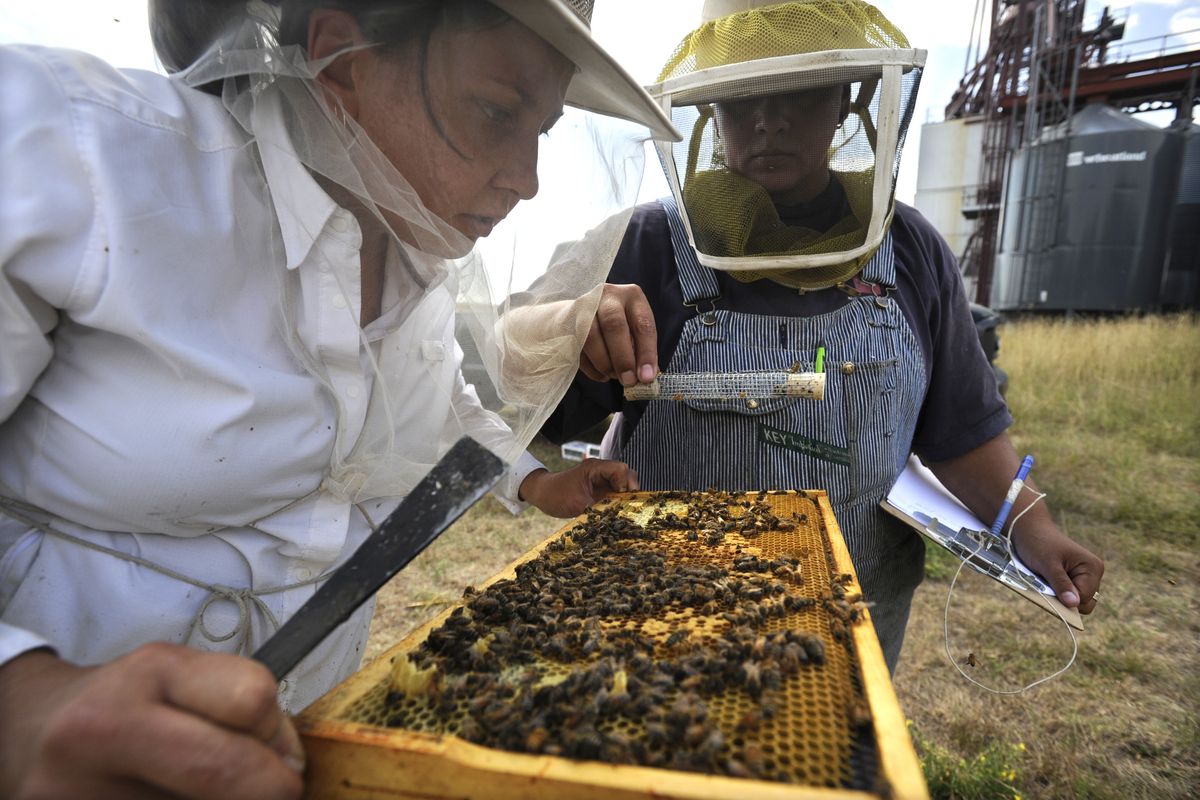Honeybee ailment could be losing its sting
WSU researchers say they’re closer to understanding a malady that’s killing pollinators and injuring agriculture

Washington State University researchers on the trail of a mysterious honeybee killer have narrowed the list of contributors to two: a microscopic pathogen and pesticides.
“We are getting closer to understanding the possible causes of colony collapse disorder,” WSU professor of entomology Steve Sheppard said of the malady that has decimated bee colonies nationwide since it emerged about three years ago.
CCD leaves colonies bereft of adult bees, yet there are no dead bees to be found near the hives. Often queens remain in the hives along with immature bees. But not even raiders from rival bee colonies will touch the honey and pollen that remain in the defenseless hive.
In the winter of 2007-’08, the disorder wiped out about 80 percent of Western Washington bee colonies, said Eric Olson, who keeps the state’s largest bee population.
That winter Olson, owner of Olson Honey in Yakima, lost 4,000 colonies, nearly a third of his total. Last year he lost 3,000 more to CCD, costing his business nearly $750,000.
“We’re buying bees like crazy,” said Olson. “But we’re just treading water.”
The threat to the honeybee population could have a profound effect on agriculture. Although other species are capable of pollination, none does so as efficiently as the honeybee. About a third of what we eat comes from crops pollinated by honeybees, according to the Agriculture Research Service. Bee pollination is particularly important to almonds, berries, tree fruit and many vegetables.
Yet as the demand for honeybees grows, the number of U.S. bee colonies has declined from 3.5 million in 2008 to 2.4 million today. As a result, beekeepers are transporting their bees farther and farther to do the work.
“In Washington state, about 75 percent of tree fruit pollination is done by out-of-state beekeepers,” Olson said. The 66-year-old said his is one of only about 10 commercial operations left in the state. “Twenty years ago, you didn’t see an out-of-state beekeeper up here.”
Olson was so concerned about the threat that in 2008 his family raised nearly $350,000 to help establish WSU’s diagnostic laboratory to collect information on honeybee health.
The investment already has begun to bear fruit with Sheppard’s announcement last week that he and his team have made inroads in the struggle against CCD.
“One of the first things we looked at was the pesticide levels in the wax of older honeycombs,” Sheppard said. Many of the combs of colonies affected by CCD contained significant residues of insecticides, herbicides, mite killers and fungicides.
Judy Wu, a WSU graduate student studying the effects of these chemicals on bees, found that adults raised in contaminated hives had significantly reduced longevity.
Sheppard said beekeepers could combat the effects of chemical contamination by changing honeycombs more frequently.
Meanwhile, another graduate student, Matthew Smart, surveyed bee colonies from California and the Pacific Northwest for a pathogen known as nosema ceranae, which undermines a bee’s ability to process food.
Smart found the pathogen, which was first described in 2007, to be widespread.
Olson said the nosema ceranae is a resilient foe. After treating his hives with a mega-dose of the antibiotic fumagillin, the pathogen levels actually increased.
“We’re throwing antibiotics on them not knowing whether it’s doing any good,” Olson said.
He hopes the WSU lab, which received state funding for another entomologist, soon will provide a practical solution to CCD – “real-time information that can help beekeepers make smarter decisions.”
“I hope it tells us what’s going on,” Olson said. “I’m sick and tired of guessing.”